Hwy 285 heading from Denver to Kenosha and Guanella Passes is backed up already as of 11am today as the weekend traffic to see the peak of fall colors, Colorado’s renewable gold, of Aspens, builds. A layer of fresh snow from last weekend adds to the spectacular views that our phone cameras will never quite show the grandeur of. Social media feeds are full of amateur and professional vistas now. Get out and enjoy the sight while you can, maybe avoid the weekend traffic if you can.
The following is a piece on the Aspens that I wrote a couple of years ago.

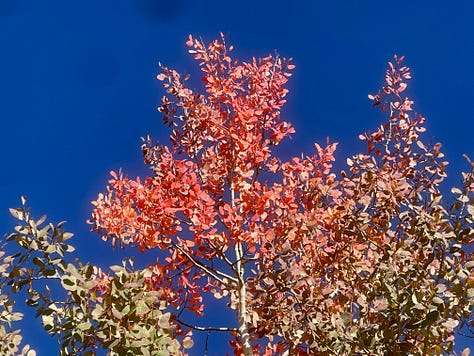

Quaking Aspens
A walk in Colorado’s high country will take you past countless Aspen trees. So many, that you might not take notice of them, that is, unless it is time for some ‘Colorado Gold’ in late September to mid-October each year. The leaf-peeping season is about to begin here, and the highway west out of Denver will soon become what the locals refer to as the ‘moving RV and Boat Show’ each weekend. Everyone is coming up to see the Aspens change color. If that is in your plans as well, or perhaps you live surrounded by Aspens, I’d invite you to take a closer look at these remarkable trees while you are among them.
First, let’s look up. Note the name, Quaking Aspen. The small, rounded leaves on their long, flat stalks (petioles), cause the leaf to twist in the breeze and give the entire tree a shimmering, ‘quaking’ look, and a sizzling, ‘snap, crackle, pop’, kind of sound. When the whole mountainside catches the breeze, it is quite a mesmerizing sight for those that take the moment to watch and listen.
Step in closer and individual trees tell their stories of scars, odd angles as the branches reach for light, snapped limbs, and trees leaning over, almost touching the ground.
Let’s start with those scars. Virtually no aspen escapes the chewing of deer, elk, bear, porcupine, beaver, and many other animals. Voles, that live under the snowpack, will chew on the base and roots of aspens to survive. Why these trees more than others? Just beneath the aspen’s white outer bark is a thin layer of green, this layer continues the photosynthesis process for the tree even once the leaves have fallen. The plant sugars in this layer provide an energy source, both for the aspen and for the wildlife that chews on the branches during the lean winter months. The aspen carries the scars of its provision. Blackened over areas, from the base up to the top of an elk’s reach, show the healed remains of chewing.
As we go down below, into the soil, the aspen root system is where the real magic is happening. Aspens grow in groves or stands. Looking from a distance you will notice clumps of aspens in among pine trees. Zooming in, down to the roots, the entire stand of aspen trees are all shoots of one massive underground organism. Therefore, an aspen grove is the largest living organism on the planet, and also the oldest. The shoots are ‘clones’, since they all originate from the same root structure, giving them all the same DNA.
So, while the ‘upper story’ (visible trees) are relatively short-lived, for a tree, (50-60 years, 150 years at most), the root systems of some groves are estimated to be tens of thousands of years old. This is noted in the famous ‘Pando’ grove in Utah, near Bryce Canyon. An estimated 50,000 stems (tree shoots) from a 100-acre root system that has been re-generating for up to 80,000 years! These root systems can survive fire and are some of the first trees to return after a forest fire, helping to restore a forest within 50 years.
The root system is what brings us back to the ‘leaning trees’. Because the aspen has a ‘lateral’ root system, meaning it runs wide horizontally and does not have a ‘tap root’, which, in other trees, runs very deep vertically, so, the depth of the aspen roots are only about 12 inches down. The hard push of a big bear or elk can lean an aspen over. As can a heavy spring or early autumn snowfall weight on the leaves. Aspen wood is not notably stiff, and branches break easily in wind and snow loads.
So, it’s not easy being an aspen. You get beat up, stepped on as a youngster, chewed on as you grow, and you might get your top snapped off in a storm or get pushed over by a big bear butt getting a scratch. (Any aspen shoot only has a small chance of making it to maturity.) But, you live on in the new shoots coming up, and you sure are appreciated by all those humans who come out to see your brilliance in the Fall.
📷 All photos are credit: The Abert Essays unless otherwise noted.
📱 Join me on my Facebook page and Substack Notes. I post smaller ‘Encounters’ posts there as I see flowers, animals, weather patterns, and anything else that catches my eye.
Sources:
- https://www.arborday.org/trees/treeguide/TreeDetail.cfm?ItemID=780
- https://www.nwf.org/Educational-Resources/Wildlife-Guide/Plants-and-Fungi/Quaking-Aspen
- https://en.wikipedia.org/wiki/Populus_tremuloides
- https://studiousguy.com/aspen-tree-root-system/
Appreciation: Thanks to my proofreader, GDPeck, for attention to detail and encouragement!





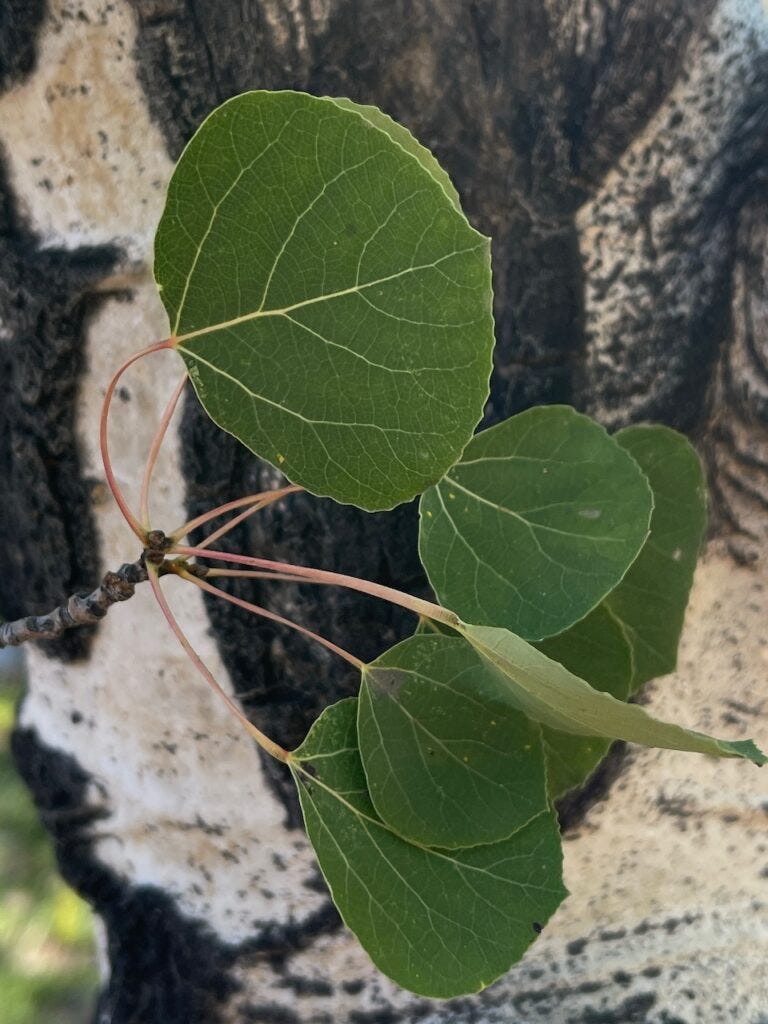

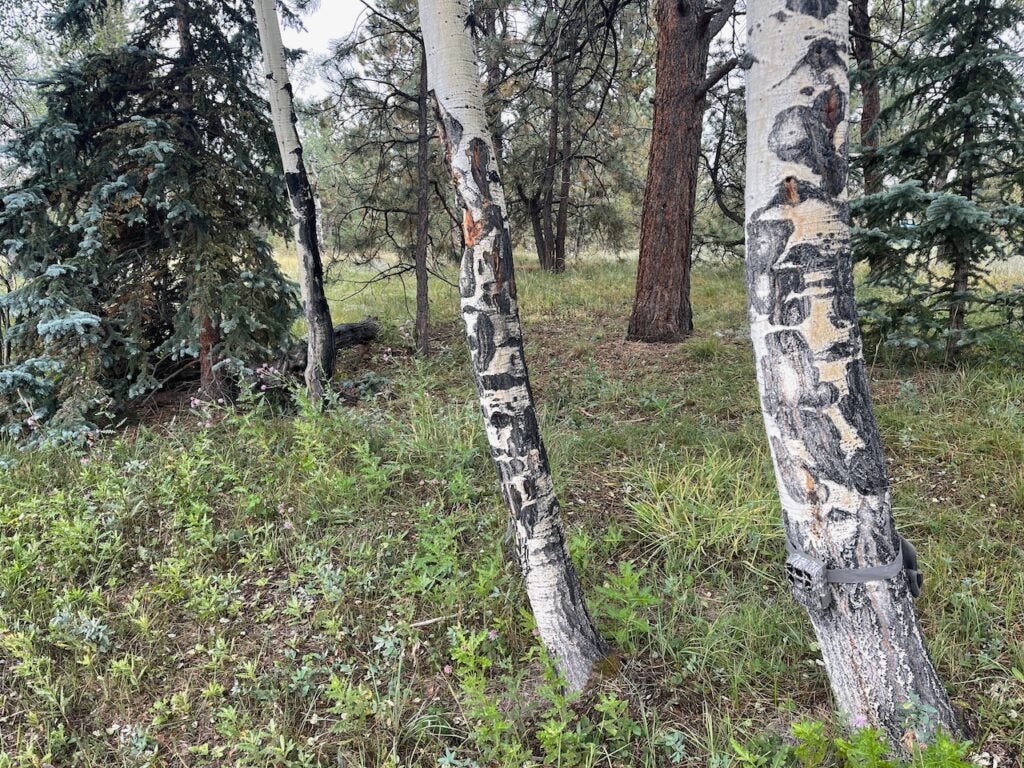

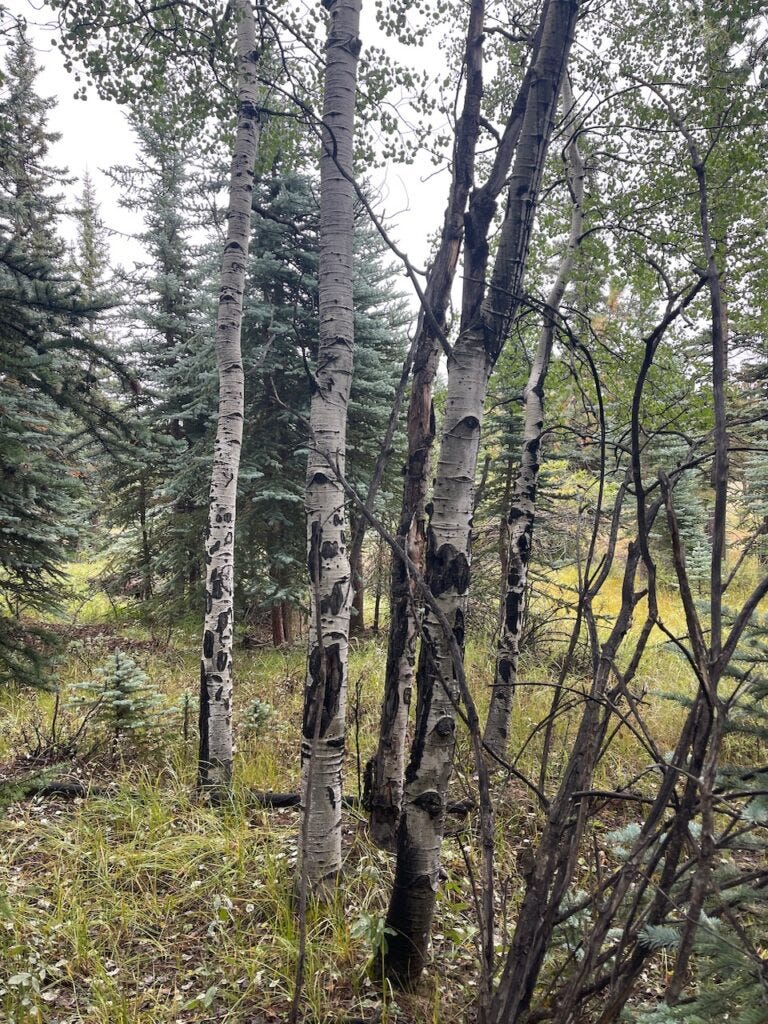
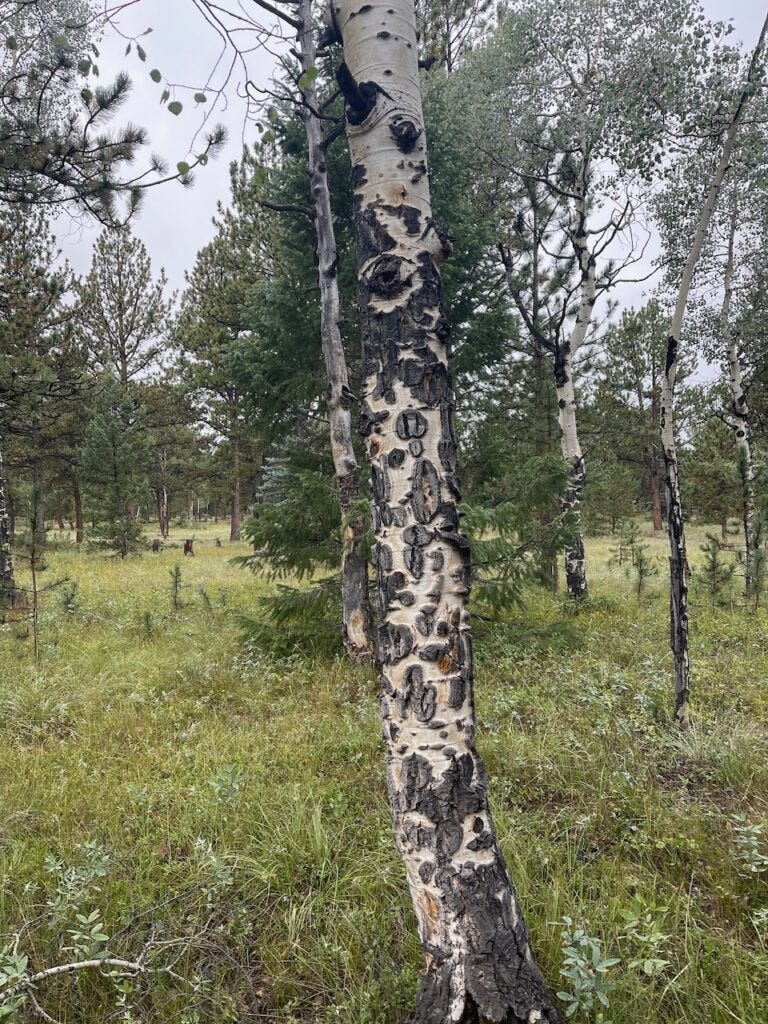
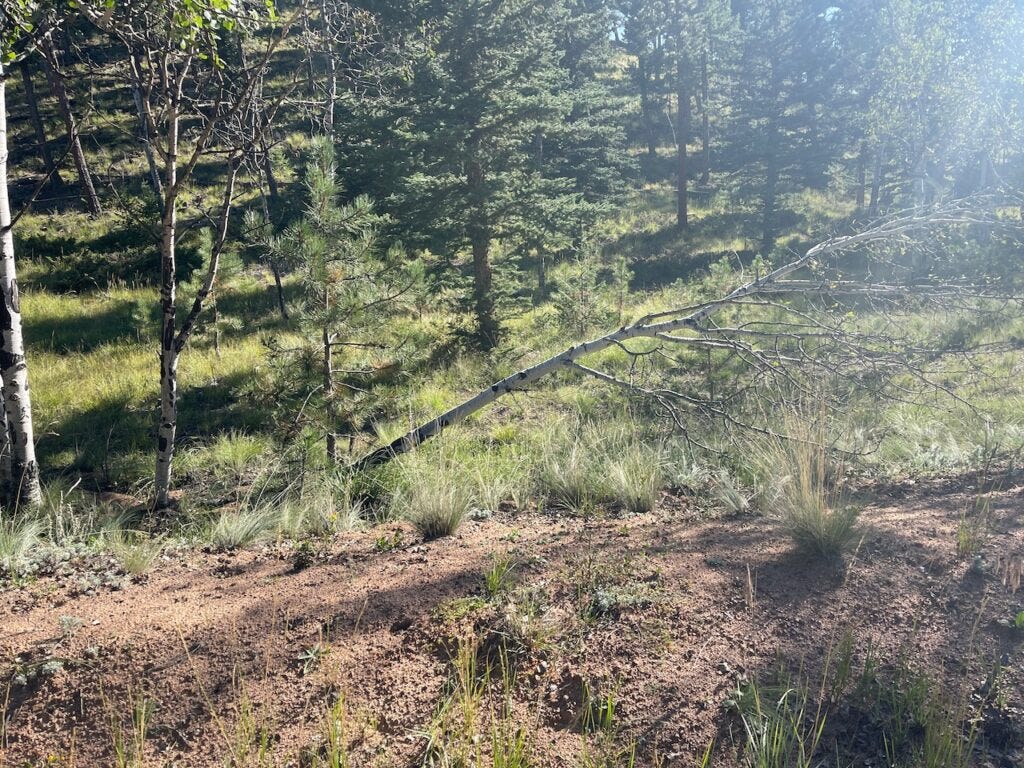

I think the reason why I consider the aspens the soul of the Rockies, is that they introduce the element of Time. When I look at the grey cliffs, the talus and the lodgepole pine in this valley, it is a timeless scene. Unless there is snow, what meets the eye doesn't vary from season to season. The aspen change all that. Time and change is now present and with them, Life. Just a few golden trees make an enormous difference.
I cannot imagine the Rockies, from New Mexico to Montana, without aspens. They would be a poorer range and region. Should the elk, bear and trout go elsewhere, it would be a sore lack, but the aspens are the soul of the place.